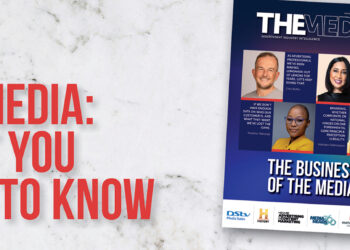A very important workshop is taking place today. It brings together representatives from broadcasting, print media, marketers and media agencies to agree on the content of the questionnaire for the first Establishment Survey, due in-field on 1 July. The last AMPS is in March.
But, says one of the prime movers in the drive to establish the new ES, Gordon Patterson, there are some misconceptions that need to be addressed, judging from the number of phone calls (and “wild opinions”) he’s getting from people who have only just realised how far along the process actually is.
Firstly, says Patterson, there is a belief that the approach to media research will not change from the days of the South African Audience Research Foundation (Saarf), which is a huge error. Saarf made decisions by consensus while the ES process will work on a simple majority. Three of the four stakeholder groups need to agree.
“I feel this approach is better as consensus decision making as consensus endorses the lowest common point of agreement, which is not, or is rarely, the best solution. The new approach ensures participation by key decision makers and those that have a business interest in the result, and not just time on their hands and a willingness to participate. Already I’ve noticed that meetings are shorter, decisions clearer and the focus is forward rather than debating decisions that have already been taken,” says Patterson.
All stakeholders equal
Secondly, he says, some people believe because the Broadcast Research Council (BRC) and the Print Research Council (PRC) will finance the ES, the marketers – represented by (MA)SA – and the media agencies, looked after by the Advertising Media Forum, will be at a disadvantage as they haven’t been in position to contribute financially.
Not true, says Patterson. There’s been a “big change” there too. “The four stakeholder groups are all equal, irrespective of where the funding is coming from. The ES is being funded by BRC and print, but the AMF and (MA)SA have equal representation and voting. When the Brands and Products survey happens (the only add-on survey allowed in the new research model), the marketers will pay for this but all stakeholders will have equal rights. Ditto for print.
“This was my solution late last year at the time when marketer funding was still a real problem and there was a view that your influence on the ES was determined by your financial contribution. My solution was accepted by all,” Patterson explained.
Thirdly, and it’s an important point, there is no veto now. “The show goes on so if stakeholders want to influence the result then a) they need to participate and b) lobby their point of view.”
There will be no delays, Patterson warned. The questionnaire goes out on 1 July, full stop. So there is now more responsibility on people in the industry to participate and to lobby “to ensure decisions made are the best ones for the industry”, he said.
Then there’s the issue of using LSMs and what model could replace this measure. Nothing can be done until the data from the first ES is crunched. This data, said Patterson, must be “sufficiently robust” to allow for new segmentation models to be built.
Questionnaire being workshopped
The questionnaire, being workshopped today, will focus on demographics, psychographics and lifestyle, and questions would need to deliver the kind of data that would help build a new model, which cannot be done using the same criteria as LSMs, Patterson said.
“I say no as the foundation currency has changed and this will encourage ignorant users to draw comparisons, ie apples with oranges,” he said. “Should the new segmentation model be called LSMs? No, again for the same reason. LSMS should die with AMPS otherwise it will just create confusion.”
Patterson said once the data from the ES is back, TNS (who won the tender to manage audience research), would conduct extensive consultations with the industry before putting forward the findings to build the new segmentation tool, which should be in use by 2017.
“What’s really important is that this is an opportunity to shape the future,” Patterson said. “We need to stop raising issues and raise our input. If there’s ‘bias’ there it will be due to a lack of contribution.
“The boat is in the harbour and is about to be pushed out. If you want to be involved for the good of our industry, then you’d best get on board now. There is no veto. You can’t abstain. There are no issues and no agenda. Marketers and media agencies are not on the back foot. We are there to contribute to a level playing field.”














